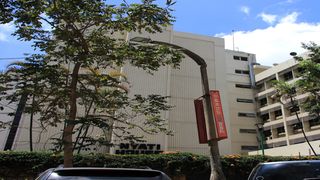
Nyati House.
| Jeff Angote | Nation Media GroupNews
Premium
Nairobi buildings with dark secrets of Kanu era
Nairobi has many buildings that hold deep secrets of Kenya’s political metamorphosis, especially in the period leading to the repeal of Section 2 (a) of the Constitution, which allowed for a return to multiparty politics. JOSEPH MBOYA takes a peek into some of these buildings.
Nyayo House
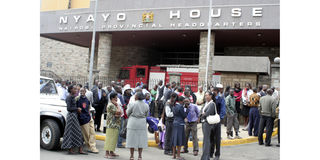
Nyayo House.
A story is told of a man who was being tortured on one of the top floors of Nyayo House by Moi era operatives who worked in the since-disbanded Special Branch. Having had enough of the torture, our man took the chance of a momentary lapse of attention on the part of his interrogators, plunged headlong through the window while shouting, “There is no God in Kenya!”
Although his was the most memorable, those who lived in the city at the height of Moi’s dictatorship in the 1980s talk of bodies falling from 27-floor Nyayo House, the preferred torture headquarters of the Special Branch. Interestingly, the building was also one of the busiest in the city, what with hundreds of Kenyans and foreigners who milled there each day looking for passports and permits since it housed the Department of Immigration.
The majority of those who suffered here were those with sympathies – proven or alleged, and more often the latter – for multiparty politics. Survivors would later reveal that the torture chambers were in the basement and the top three floors of Nyayo House.
Victims would be held in solitary confinement and animal-like conditions in the basement and taken in express lifts to the top floors to meet some of the senior officers of the Special Branch – the most notorious being a man named Opiyo.
Some of the survivors of the torture chambers include ODM supremo Raila Odinga, former MP and assistant minister Koigi wa Wamwere and former Nyeri Town MP Wanyiri Kihoro, to name just a few. Just after the Narc government of Mwai Kibaki came to power in 2003, the survivors pushed and had their way when the torture chambers were opened to the public to witness first-hand the dungeons where anti-government figures were tortured.
Nyati House
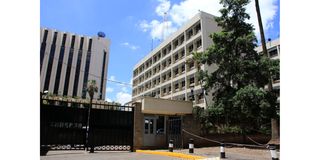
Nyati House.
A stone’s throw away from Nyayo House stands Nyati House, which for the longest time was the headquarters of the Special Branch. The architecture is as uninspiring as the events it witnessed. It is a building enveloped in gloom and at times it has the deathly silence of a funeral home.
Dissidents and innocent people who had fallen afoul of the Special Branch would find themselves hauled to this place for torture and later taken to court on trumped-up charges. In many cases, innocent people pleaded guilty for no reason but to escape another round of torture at Nyati House.
Tumaini House
Just behind Kencom House in the city centre stands Tumaini House, synonymous with funeral committee meetings in the pre-coronavirus period. However, the building was a major player in the events leading to the reintroduction of multiparty politics in Kenya.
It is this building that housed Society magazine, the weekly that tested the boundaries in as far as writing stories critical of the government went. Former Nation Chief Parliamentary Reporter Pius Nyamora and his wife Loyce started this publication and they were soon engaged in endless entanglements with the authorities.
In one particularly messy episode, Nyamora, Loyce and their journalists were arrested and driven some 400 kilometres to Mombasa to face charges, notwithstanding the fact that the alleged offence was committed in Nairobi. The people in power were on a campaign to show their might.
Owned by the National Council of Churches of Kenya (NCCK), which was also a thorn in Moi’s flesh, Tumaini House also housed the Nairobi Law Monthly published by human rights lawyer Gitobu Imanyara. Many are the times when unknown people, believed to be state agents, visited mayhem in the publication’s offices. Another notable establishment here was the Public Law Institute associated with another human rights defender the late Dr Oki-Ooko Ombaka.
County Hall
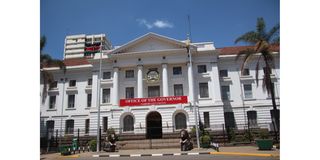
County Hall.
Right across the road from Parliament stands County Hall. This building gained fame in 1997 during the Inter Parties Parliamentary Group (IPPG) meetings. Ahead of that year’s General Election, Moi and his party, Kanu, were facing a serious challenge from the opposition.
The opposition-backed National Convention Executive Council was marshaling troops to take to the streets in protest against Kanu. That is when Moi, ever the schemer, birthed the IPPG, with Saku MP Jillo Falana becoming the face of the group.
At the end of the day, IPPG introduced reforms that Parliament ratified. The changes provided for the repeal of laws that allow detention without trial, and approved the expansion of the electoral commission to bring in members nominated by the opposition.
Other benefits that came with the IPPG reforms included a repeal of the law that hitherto barred for life MPs who had been disqualified on grounds of administering oaths to the electorate as well as the readmission of university students who had been expelled because of holding anti-government political views.
Agip House
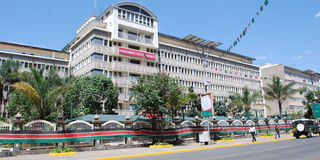
Agip House.
Entering the city centre, just before Times Tower is the Agip stage. Many might not know why it is called Agip, but for many years the Italian oil company had operations in Kenya with its head office at Agip House and a petrol station next to it.
The late doyen of opposition politics Jaramogi Oginga Odinga had an office there. When the Forum for Restoration of Democracy (Ford) was formed under the leadership of Odinga, it was from Agip House that it operated.
Fissures would later lead to a split in Ford after it became a political party. From the ashes of Ford arose two political parties – Ford Kenya under Odinga, which continued to operate from Agip House and Ford Asili under Kenneth Matiba, which hopped across town to Westlands.
Ufungamano House
Located close to the University of Nairobi, the venue hosted meetings by a broad-based movement that was composed of civil society groups pressing for constitutional reforms. The clamour was dubbed the Ufungamano Initiative, after the venue that hosted numerous National Convention Executive Council (NCEC) forums.





